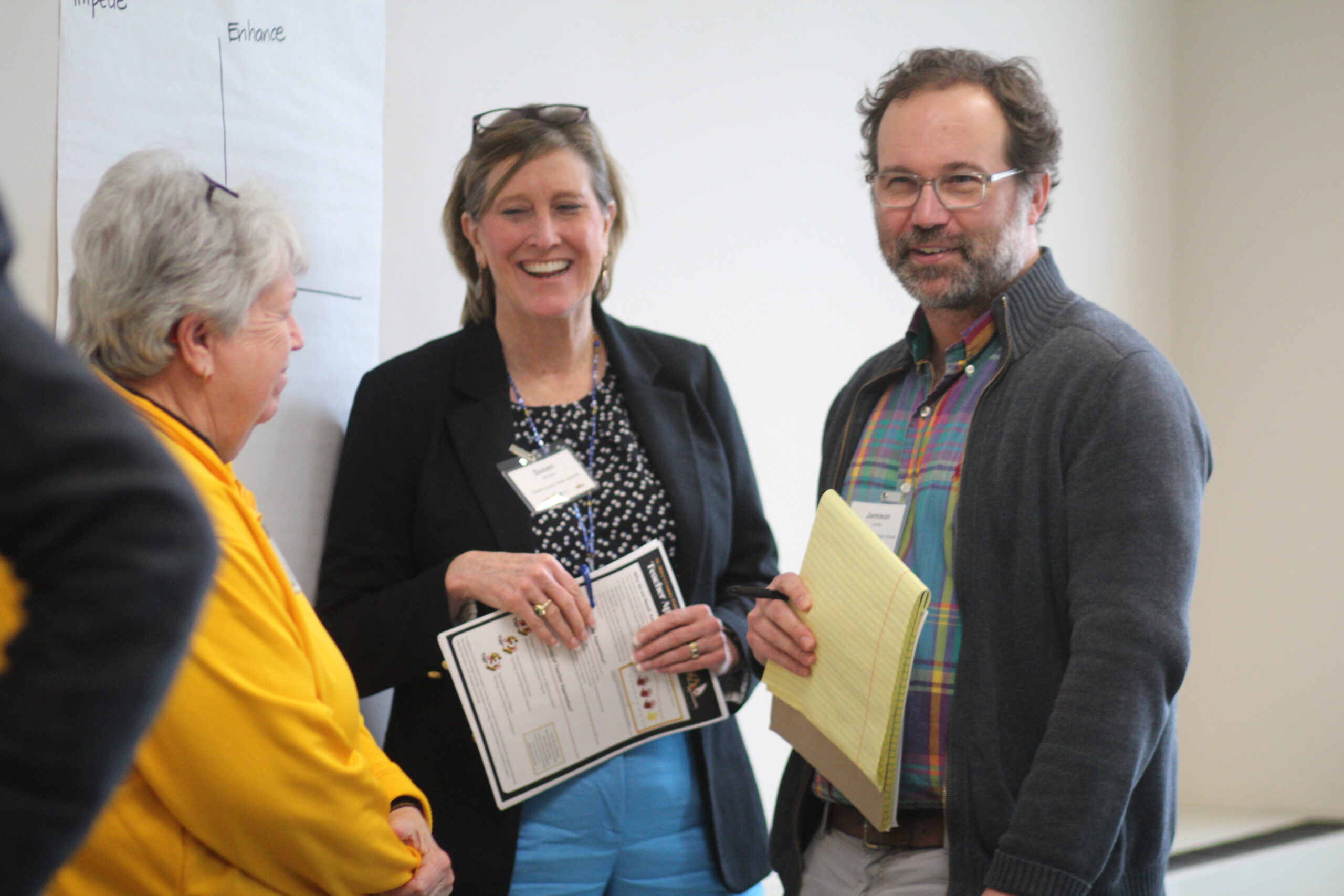Nestled in the hills of western Pennsylvania, one school district is rising to the challenges of the day by redefining leadership through collaboration and trust. Grove City Area School District is placing teachers at the forefront of decision-making, creating a culture where innovation and shared responsibility thrive. By embracing forward-thinking system leadership principles, the district has developed personalized learning plans, strengthened professional development, and prepared students for a future shaped by emerging technologies like AI.
Below is the story of Grove City’s journey toward distributed leadership and collaborative trust in their own words.

“What makes Grove City special is that this could have been any teacher. The culture they’ve built allows every educator to step into a leadership role when needed. That’s what makes this district a model for others.”
By Charlie Deitch, Communications Specialist, Grove City Area School District
Grove City Area School District (GCASD) is gaining recognition across Pennsylvania and, now, into Maryland for its adoption of an innovative program that gives teachers a bigger role in decision- making. Through a partnership with the National Center on Education and the Economy (NCEE), the district has developed a leadership model that places teachers at the heart of solving problems and driving innovation.
Amy Morton, a system design specialist with NCEE, has worked closely with Grove City schools and sees their success as a gold standard of sorts. “The culture there promotes empowered teachers to make informed decisions,” Morton says. “There’s a mutual respect between administration and faculty that fosters collaboration and shared responsibility, which is critical for success.”
The district’s journey began when its leadership team, adopted NCEE’s “Nine Building Blocks of a World-Class Education System.” Inspired by the practices of high-achieving educational systems worldwide, the district tailored these principles to its local needs.
Dr. Brendan Smith, principal of Grove City Area High School, explains the shift in perspective. “We realized that if we wanted to prepare students for the future, we needed to trust our teachers,” Smith says. “They’re the ones closest to the students and their challenges, so their input is critical. It’s not just about implementing a plan; it’s about creating a culture of trust and collaboration.”
One of the standout results of this collaboration is the development of Individualized Learning Plans (ILPs). These personalized plans help students set and achieve their academic and career goals, offering tailored pathways to success. Teachers played a key role in designing the ILPs, ensuring they reflected students’ unique needs.
“Teachers are closest to the problems that need solving,” Morton explains. “When they’re given the authority to make decisions, they grow as leaders, and their students benefit. That growth creates a cycle of empowerment that impacts the entire school community.”
The district’s commitment to teacher leadership also extends to professional development. Programs like “Lunch and Learn” bring educators together to share ideas, solve challenges, and continuously improve their teaching practices. These sessions have become a cornerstone of GCASD’s focus on collaboration and innovation.
Bill Hoffman, a chemistry teacher at Grove City Area High School, has been a key figure in showcasing the district’s success. Recently, Hoffman presented to education officials in Maryland, highlighting how GCASD’s teacher-driven approach has improved the school environment and student outcomes. While Hoffman has become a visible advocate, Morton emphasizes that his work represents the collective effort of the entire district.
“Bill is phenomenal,” Morton says, “but what makes Grove City special is that this could have been any teacher. The culture they’ve built allows every educator to step into a leadership role when needed. That’s what makes this district a model for others.”
The district’s leadership model is about more than addressing immediate challenges; it’s about building a sustainable system for the future. Dr. Smith says this approach has reshaped his role as a principal. “I’ve learned to listen more and involve teachers in every step of the process,” he says. “It’s not just about solving today’s problems—it’s about creating a foundation for ongoing growth and innovation.”
Dr. Smith says a major part of the success comes from Morton’s ability to help facilitate change. “This is one of my most meaningful professional development that I’ve ever experienced,” Dr. Smith says. “Amy Morton is such a skilled facilitator. She creates a safe environment for people to speak and share their thoughts.”
This collaborative spirit is also evident in how the district approaches new technologies. As artificial intelligence (AI) becomes increasingly important in education and the workplace, GCASD is ensuring both teachers and students are prepared. Teachers have taken the lead in exploring how AI can support learning, making sure it’s used ethically and effectively.
“Our focus on AI ties back to equity,” Smith explains. “We want every student, including those who are at risk, to be prepared for a future where these skills are essential. By involving teachers in the planning, we’re ensuring that the tools we use truly benefit our students.
“With AI, for example, we recognize some of the pitfalls of the technology as it stands today, Smith said. “To deal with the issue today we have put policies in place to guide students. “But then we have to look at how we can use it in the future for the students benefit. It’s about establishing a cycle of continuous improvement.
GCASD’s partnership with NCEE has not only transformed its schools but also inspired other districts in Pennsylvania and Maryland. Morton says that the Grove City story serves as a powerful example of what’s possible when schools embrace shared leadership. “Their teachers and administrators have built a system based on trust and collaboration, and that has made all the difference,” she says.
This transformation hasn’t always been easy. Morton acknowledges that leadership development can be messy and challenging, but she credits the district’s perseverance. “Grove City’s success comes from the willingness of everyone involved to embrace change and work together,” she says. “It’s not about perfection—it’s about progress.”
Morton said that the success Grove City has had wouldn’t be possible if not for the complete support of the administration. She credits Dr. Smith and Dr. Jennifer Nemet, the assistant principal, for their openness to the new methodology. “They truly are two of the best,” she said. “And then they are aided by unwavering support from Superintendent, Dr. Jeffrey Finch and Assistant Superintendent, Dr. Joshua Weaver.
Smith agrees that the process has been a positive learning experience. “One of the most rewarding parts of this initiative has been seeing teachers and administrators grow together,” he says. “It’s about creating an environment where everyone feels valued and supported, and that’s where true innovation happens.”
As GCASD continues to lead the way in educational innovation, it remains a powerful reminder of what’s possible when teachers are given the tools and trust to lead. The district’s focus on teamwork and shared leadership is paving the way for students and educators to thrive, setting a standard that other schools can look to for inspiration.




